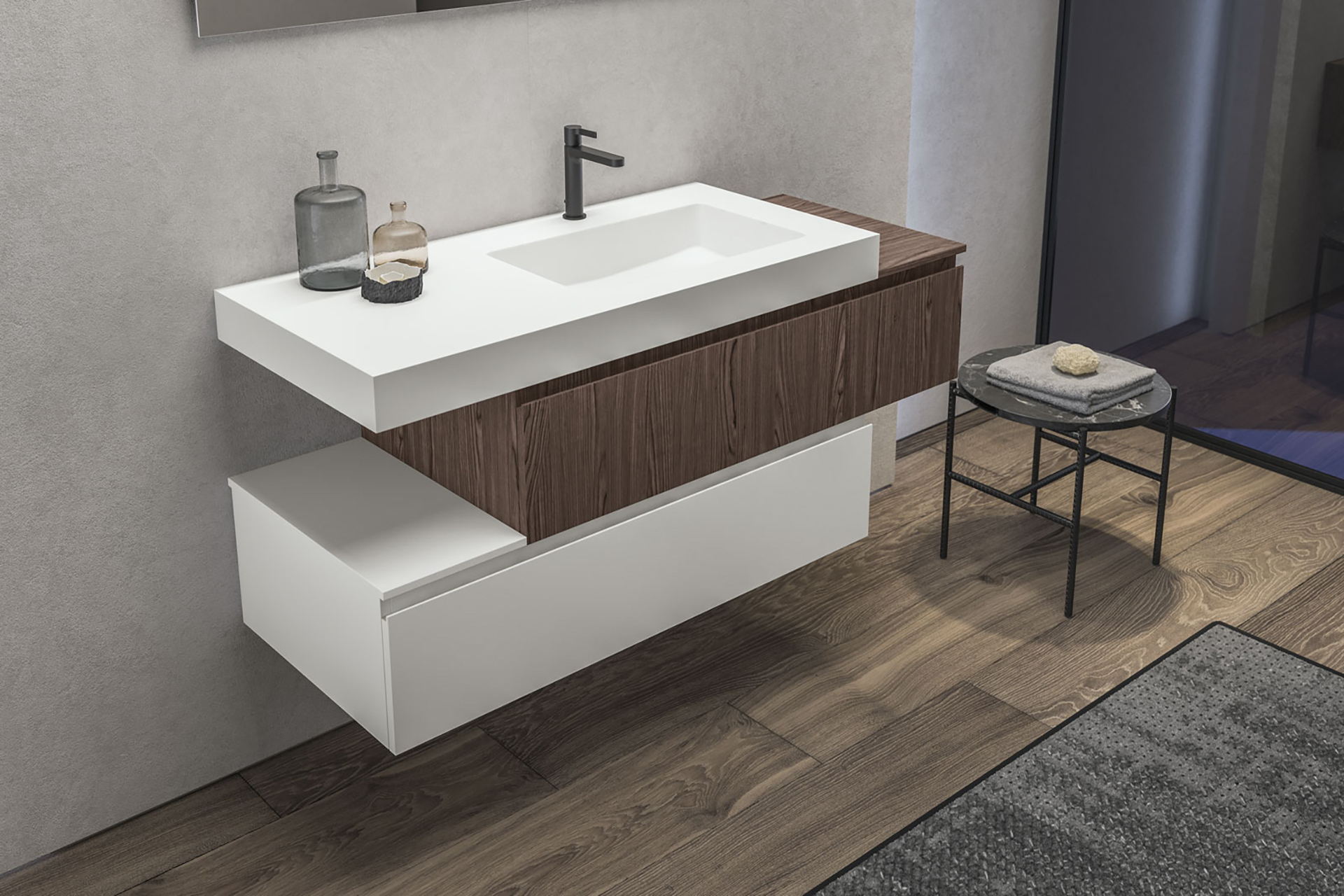Styles and Designs of Modern Bathroom Sink Cabinets

Modern bathroom sink cabinets are a crucial element in creating a stylish and functional bathroom space, reflecting personal taste and the overall design aesthetic. Choosing the right cabinet can significantly impact the look and feel of your bathroom, from minimalist chic to rustic charm. The selection process involves considering factors such as style, size, materials, and budget.
Five Distinct Styles of Modern Bathroom Sink Cabinets
Five distinct styles showcase the diversity in modern bathroom sink cabinet design. Each style offers unique features and caters to different preferences and bathroom layouts. These styles vary in material, price point, and maintenance needs.
| Style | Characteristic Features | Materials | Price Range | Durability | Maintenance |
|---|---|---|---|---|---|
| Minimalist | Clean lines, simple design, often featuring open shelving or a single, sleek cabinet. | Lacquered MDF, high-gloss acrylic, metal | $300 – $1500 | Moderate | Easy; wipe clean regularly. |
| Modern Farmhouse | Combination of rustic and modern elements; often features distressed wood, metal accents, and open shelving. | Reclaimed wood, painted wood, metal | $500 – $2500 | High | Moderate; occasional cleaning and treatment. |
| Contemporary | Sleek, geometric designs; often incorporates integrated sinks and hidden storage. | High-gloss laminate, lacquered wood, glass | $800 – $3000 | High | Easy; wipe clean regularly. |
| Traditional | Classic designs with ornate details; often features raised panel doors and multiple drawers. | Solid wood (oak, cherry, mahogany) | $1000 – $5000+ | Very High | Moderate; regular cleaning and polishing. |
| Transitional | Blends traditional and modern elements; often features clean lines with subtle decorative details. | Wood veneer, painted wood, metal accents | $700 – $2500 | High | Easy to Moderate; depends on materials. |
Modern Bathroom Sink Cabinet Layouts
Bathroom size significantly influences cabinet layout choices. Optimizing space and functionality are key considerations. The following layouts demonstrate adaptability to different bathroom sizes.
Modern bathroom sink cabinets – Small Bathroom Layout: A wall-mounted floating vanity with a small, integrated sink maximizes floor space. Dimensions could be approximately 24 inches wide by 18 inches deep by 30 inches high. A simple, minimalist aesthetic would enhance the feeling of spaciousness. The sink type would be a small, integrated ceramic or composite sink.
Medium Bathroom Layout: A freestanding vanity with a double sink offers ample storage and counter space. Dimensions might be around 60 inches wide by 22 inches deep by 34 inches high. A contemporary style with sleek lines and subtle detailing would be suitable. The sink type could be two integrated ceramic or composite sinks.
Large Bathroom Layout: A double vanity with extensive storage and a large countertop area provides luxurious functionality. Dimensions could be 72 inches wide or more, 24 inches deep, and 36 inches high. A traditional or transitional style with intricate detailing could be incorporated. The sink type would be two large, undermount or vessel sinks.
Materials Used in Modern Bathroom Sink Cabinets
The choice of materials greatly affects the cabinet’s aesthetics, longevity, and water resistance. Each material presents unique advantages and disadvantages.
Wood: Offers a natural, warm aesthetic. Solid wood (like oak or cherry) is durable but expensive and requires regular maintenance to prevent water damage. Wood veneer provides a similar look at a lower cost, but it’s less durable. Proper sealing is crucial for water resistance.
Metal: Provides a sleek, modern look. Stainless steel and aluminum are highly durable and water-resistant, but can be prone to scratching and require regular cleaning. Metal cabinets often require careful handling to prevent dents.
Composite: Offers a blend of durability and affordability. Materials like MDF (Medium-Density Fiberboard) and particleboard are cost-effective but require careful sealing to prevent water damage. Composite materials often mimic the look of wood or stone.
